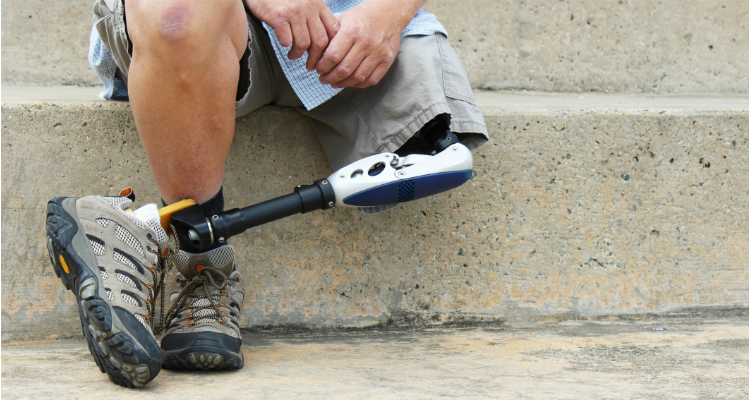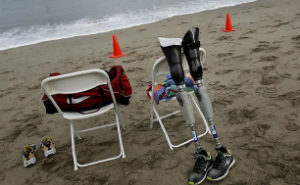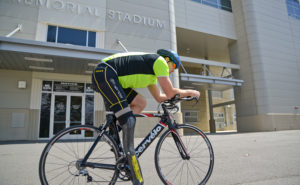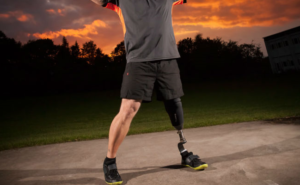Knowing the various components of a prosthetic leg can help you understand how your leg functions as a whole.
Prosthetic limbs are technological marvels, but their various components are not well-known by the general public. Fortunately, modern prosthetic legs are as user-friendly as they are functional.
Because the typical prosthetic leg is designed to resemble a real limb, few of us take the time to wonder about the parts of a prosthetic leg. But understanding how the individual parts work will help you understand why they function so well together. That understanding is crucial for living with a prosthetic leg, whether it is for yourself or when you are helping a loved one incorporate the new limb into his or her life.
The Limb
The largest part of the prosthesis is the leg itself, made from a model based on your residual limb and the rest of your body. The two main types of prosthetic legs are below the knee (BK) prosthesis, and above the knee (AK) prosthesis, which also include artificial knees. Subcategories include prosthesis at the levels of hemipelvectomy, hip disarticulation, and foot amputations.
The design of the actual limb will vary depending on a variety of factors, including the specific area of amputation as well as your own preferences. A typical prosthetic leg is constructed of lightweight material and covered in flesh-colored plastic that matches your own skin as exactly as possible, but a secondary sports prosthesis may look much different.
The Socket
The socket is the transitional piece of equipment connecting your prosthetic limb to your residual limb. Updated sockets, developed from plaster casts or from imaging technology of your residual limb, may be needed from time to time in order to accommodate your body’s changes. The kind of socket, in terms of both design and materials, that are used with the prosthetic limb depends largely on whether it is a BK or AK prosthesis.
Sockets are often part of the overall attachment mechanisms securing the prosthetic limb to the residual limb, sometimes as part of a sleeve or harness system.
Knees and Feet
There are several prosthetic knees on the market, with manual locking knees providing a good overall degree of stability. The more sophisticated microprocessor knee automatically senses degrees of walking or running speed.
Prosthetic feet will also be determined by your physical capacities, as well as your lifestyle challenges. The degree of complexity ranges from a basic solid ankle/ cushioned heel type, to dynamic response feet, which are keyed to the energy level of the walker.
Controls
Generally speaking, controls need to be more sophisticated in upper limb prosthesis in order for the arms or hands to “know” how to move. Lower limb prosthesis operate more simply, using gravity. However, if there are biological reasons why more help is needed, cables running through the artificial legs can be powered by battery or myoelectrical technology.
To understand more about how the parts of a prosthetic leg work together, speak with the experts here at Horton’s O&P. Please feel free to explore our website or contact us to learn more about prosthetic legs by calling 501-683-8889 for a consultation.
[maxbutton name=”Download Prosthetics 101″]




Leave a Reply